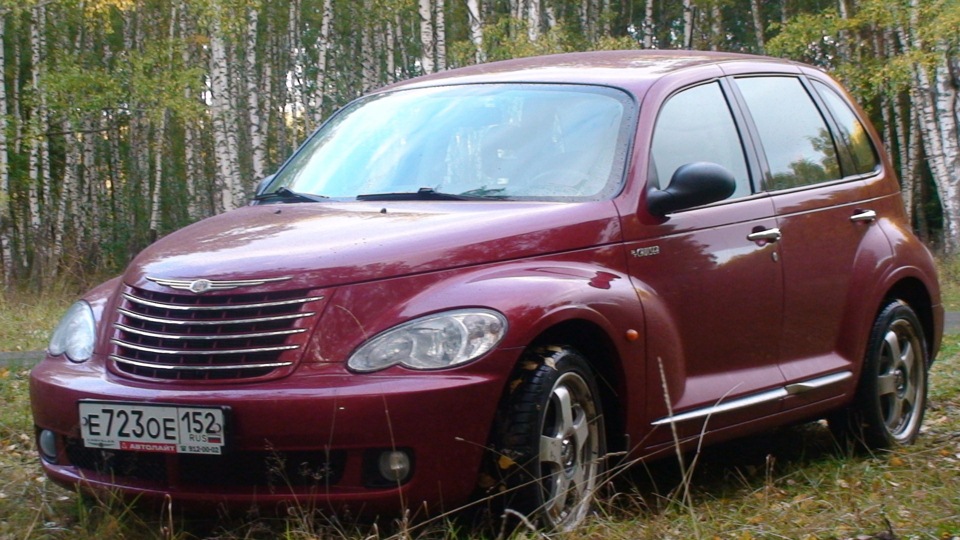Chrysler Group LLC: a spectacular history of the development of the "Big Three" member of Detroit
Chrysler Group LLC is an American automotive company that was part of the "Big Three" US automakers (along with FORD and GM) in Detroit. Currently under the control of an Italian company with a Dutch registration FCA Group. The full name of the company is Fiat Chrysler Automobiles, this legal entity is controlled by an investment group EXOR, controlled by members of the Agnelli family of industrialists.

General information about the company
The headquarters of the American division is located in the state of Michigan in the city of Auburn Hills, a suburb of Detroit. The business registration is retained at the Detroit address: 2101 Conner St, Detroit, MI 48215, USA. The company has its own financial and research departments. From 1924 to 1998, Chrysler was a fully independent and prosperous parent company with the largest portfolio of automotive brands.

The merger with Fiat in 2014 occurred as a result of the declared bankruptcy in 2009, during the financial crisis of 2008, the company's financial performance declined significantly. The change of ownership that took place in 2007 also had a negative impact on the company's condition.
Chrysler, like other Detroit companies, is developing a number of related areas, including the military-industrial complex. The company produces electronic and aerospace products, is a government contractor for the US Department of Defense. Decreased productivity and financial losses are also associated with a significant share of military orders, the execution of which was traditionally handled by the Detroit trio until the 1970s. Automotive was an additional conversion industry that failed to sustain FORD, GM, and Chrysler.
History of Chrysler: ups and downs
Chrysler was founded in 1924 by engineer Walter Percy Chrysler as a result of the merger of several manufacturing enterprises - Maxwell Motor absorbed Chalmers Motor (1908) and Willis-Overland, which were engaged in the production of spare parts. The restructuring was carried out in a similar way to other automotive companies that consolidated assets within one company to gain a larger market segment.

In the year of registration of the company, a 6-cylinder engine was produced. In 1928, Dodge production was acquired. This trademark immediately brought the new manufacturer to the leaders of automakers in the United States. Almost immediately after the opening, the production of Plymounth ("Plymouth") and DeSoto ("De Soto") cars began.

Chrysler held an active market position until 1955, during this period the company significantly expanded its brand portfolio by buying up a number of European automakers, for example, Barreiros Diesel (40% shares, 1963), Rootes Group (30% shares, 1964) and others. These companies were given new names under the auspices of Chrysler and were subsequently merged into the European Chrysler Center.
First bankruptcy
In the 1970s, under the Chrysler brand, Mitsubishi Motors produced small cars for the United States, but the company soon lost its market segment due to an energy crisis, an ill-conceived production strategy, and quality problems. The first time Chrysler was on the brink of bankruptcy was in 1978.

The company in 1978 comes under the control of Peugeot-Citroen, but this did not help restore its financial performance. As a result, well-known crisis manager Lee Iacocca was invited, who convinced the US government of the negative consequences for the US economy as a result of the bankruptcy of the legendary automaker Chrysler. He received loan guarantees from the White House and secured the repayment of debts. Iacocca also overhauled the management of the company and brought it to a profitable performance. Chrysler fully recovered by 1983.

In 1987, the company included Lamborghini (1987), AMC (American Motors Corporation) with a spin-off Jeep. In 1985-1989, the company increases sales with small cars developed in conjunction with Renault and Mitsubishi Motorshaving some experience of cooperation in the past. At this point, an increase in demand was also observed in the Eagle pickup segment.
Second bankruptcy and loss of independence
In 1998, the company was acquired by Daimler-Benz with the obvious goal of selling premium cars in the US under the Chrysler brand. However, the merger was not successful, experts cite the conflict of managers and attempts to "Daimler-Benz" change management staff. Soon the company had problems with suppliers. In 2007, Chrysler changed ownership again and was taken over by the Cerberus Foundation.
In 2009, it was declared technical bankruptcy, in 2014 Chrysler became part of the FCA Group. After the payment of debts, part of the assets in 2009 became the property of FIAT, the concern completed the acquisition of 100% shares of the American manufacturer in 2014.
The management of Chrysler enthusiastically accepted this news, given the constant conflicts with the previous owners of Daimler-Benz. Chrysler expected to gain access to FIAT technology to strengthen its position in the US market. However, 5 years later, in 2019, there is no significant breakthrough in Chrysler sales. Confidently losing market share and FCA Group. However, the manufacturer has brought a competitive platform to the market.
Brand Portfolio
At the moment, a number of brands are associated with the company, produced under the original names. All companies are partly independent and run their own business.
- Chrysler - cars, minivans;
- Dodge– cars, minivans, crossovers and SUVs;
- Ram Trucks– pickup trucks and commercial vehicles;
- Jeep- crossovers, SUVs and all-terrain vehicles;
- SRT- high-tech versions of cars;
- MOPAR- Upscale versions of cars, pickups and SUVs from Chrysler, Dodge, Ram, Jeep and Fiat. (since 2012); spare parts for group cars.
The brand portfolio also includes the discontinued brands Plymouth (1928 to 2001), Eagle (1988 to 1998), Imperial (1955 to 1975 and 1981 to 1983), DeSoto (1928 to 1961).
Detroit trio
Since the start of the crisis in Detroit, the company has closed and rescheduled production several times. However, they have been preserved and continue to work to this day. Detroit is now considered a depressed region with a low standard of living and a high crime rate. However, the city is gradually returning to normal life, even after losing a significant part of the population.
In 2012, Chrysler Group LLC, before merging with FCA Group, launched the Imported From Detroit advertising campaign, based on historical trends. Special editions of cars advertised:
- Chrysler 200, released for the 10th anniversary of the film "8 Mile";
- the Motown 300 sedan associated with the Broadway show of the same name (Motown: The Musical);
- Chrysler 300 Glacier.
All of the cars appeared in commercials that emphasized their Detroit roots. During that period, 66 new models were released, including the well-recognized 200 and 300 sedans with a characteristic Detroit design. Special editions of the 300 Glacier and 300C John Varvatos are offered, with the latter model named after the Detroit menswear designer.
The advertising campaign turned out to be very successful and attracted new potential buyers who were interested in American cars. Which emphasizes the demand for such an auto product in the US car market.
Modern product range
Experts consider the new brand to be the main competitor of the brand Genesis. At the same time, Chrysler is significantly inferior in terms of technical equipment with a similar design. However, the new Chrysler 300 platform impresses with its extravagant looks. First of all, it demonstrates the features of the luxurious design of the American school, classically combining a visual demonstration of power and sophistication.
The classic "American" is an executive class car or a worker's car who knows how to appreciate beautiful and powerful cars. Chrysler limousines and FORD pickups are bright representatives of this trend. Of course, the American lines in car design are complemented by the craftsmanship of American technologists and technological innovations. The new model retains classic proportions, a recognizable radiator grille, and a representative design style.
The Chrysler 300 continues the tradition of the company's most successful car, hence the name. The E-class platform was chosen as the main consumer line, combining the style of the popular GT direction (“grant tourism”), comfort and excellent maneuverability.
Fans of innovation who have paid attention to Genesis can safely return to the cars of the American manufacturer. The dashboard is equipped with an Unconnect system with touch control of vehicle functions and media. Active safety is well thought out, first of all, headlights have been improved, adaptively adjusting to the level of illumination and weather conditions. There is a frontal collision avoidance system and tracking of Blind-spot Monitoring areas that cannot be monitored. The total number of safety subsystems exceeds 70, which is enough for a city sedan to ensure a safe ride.
The new platform has well-designed details, attention to quality complements the brand's sleek style, recognizable by customers and harmonious proportions, combined with good aerodynamics. For these purposes, the front glass on 15% was rejected back. Thanks to the "invisible" racks, a panoramic view is provided.
In addition, the chassis of the new platform has increased rigidity and provides excellent sound insulation through the use of acoustic foam in the cavities. As a result, Chrysler vehicles are among the quietest in their class. Sound and heat insulating double glazing is also used, providing maximum driving comfort at any speed. The change in the geometry of the front and rear suspension made it possible to achieve excellent maneuverability of the car, which is especially surprising for such a large car.

The new Chryslers are a piece of masterful mechanical design, complemented to the right degree by digital features. Modern cars of this brand combine prestigious design, reliability and driving safety, comfort and exclusive finishes with excellent maneuverability. The complete silence in the cabin creates a great atmosphere for relaxing while driving, while maintaining a high level of safety, even if the driver is distracted from the road.






